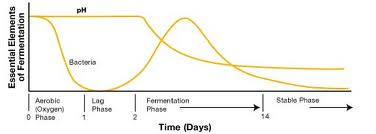Introduction to Leaf Silage - Part 1
Introduction to Leaf Silage - Part 1
Author : Louise Jakobsen
During winter, it can be difficult to find enough leafy plant material for your browsing animals. You may be lucky to have access to suitable evergreen trees or shrubs.
If not, leaf silage is a great way to cater for your browsers during winter.
Although labour intensive, it is a very cost-effective and simple way to provide leaves all year round and is generally received very well by most animals.
Analysis results have shown great retention of nutrients in leaf silage compared to the fresh material.
We recommend packing whole leaves as opposed to chipped material to encourage more chewing and to prolong feeding time. Chewing is an essential part of the digestive process of browsers. Some fine twigs depending on plant species can be included to increase fibre content.
Packing leaves for silage may sound like a simple task. But once packed, there is a complex fermentation process taking place inside the container that can go horribly wrong.
It is therefore essential that a number of considerations are made when packing and storing silage.
But first, a brief simplified insight to the essential elements of the fermentation process:
AEROBIC PHASE
Aerobic bacteria consume soluble carbohydrates (undesired) and use up oxygen trapped in the plant mass (desired).
The duration depends on exposure to air (oxygen) but is usually around 1-2 days.
pH change: 6.5 → 6.0
ACETIC PHASE (anaerobic)
Fermentation and acidification; Acetic-bacteria convert carbohydrates into acetic acid (which can be utilised by animals).
Takes 2 – 3 days.
pH change: 6.0 → 5.0
LACTIC PHASE (anaerobic)
The pH value becomes unsuitable for acetic-acid producing bacteria.
Lactic-acid bacteria convert carbohydrates into lactic acid – which is most nutritionally desirable.
Takes up to 18 days.
pH change: 5.0 → 4.0
PRESERVED PHASE (anaerobic)
Stability and storage; pH drops to 4.0
Part of the protein fraction is degraded to peptides, amino acids, amides and ammonia by microbial enzymes.
All bacterial activity stops.
Silage is preserved and ready for consumption.
Storage life is up to 12 months or more depending on the quality of packing, material and appropriate storage.
AEROBIC DETERIORATION
Re-exposure to air from feeding or damage to the barrel.
Yeasts & acetic acid bacteria oxidise lactic acid.
pH change: 4.0 → 7.0
Decomposition starts and heat is given off (once the container is opened again, the material should be used up within 5-10 days depending on storage facilities).




